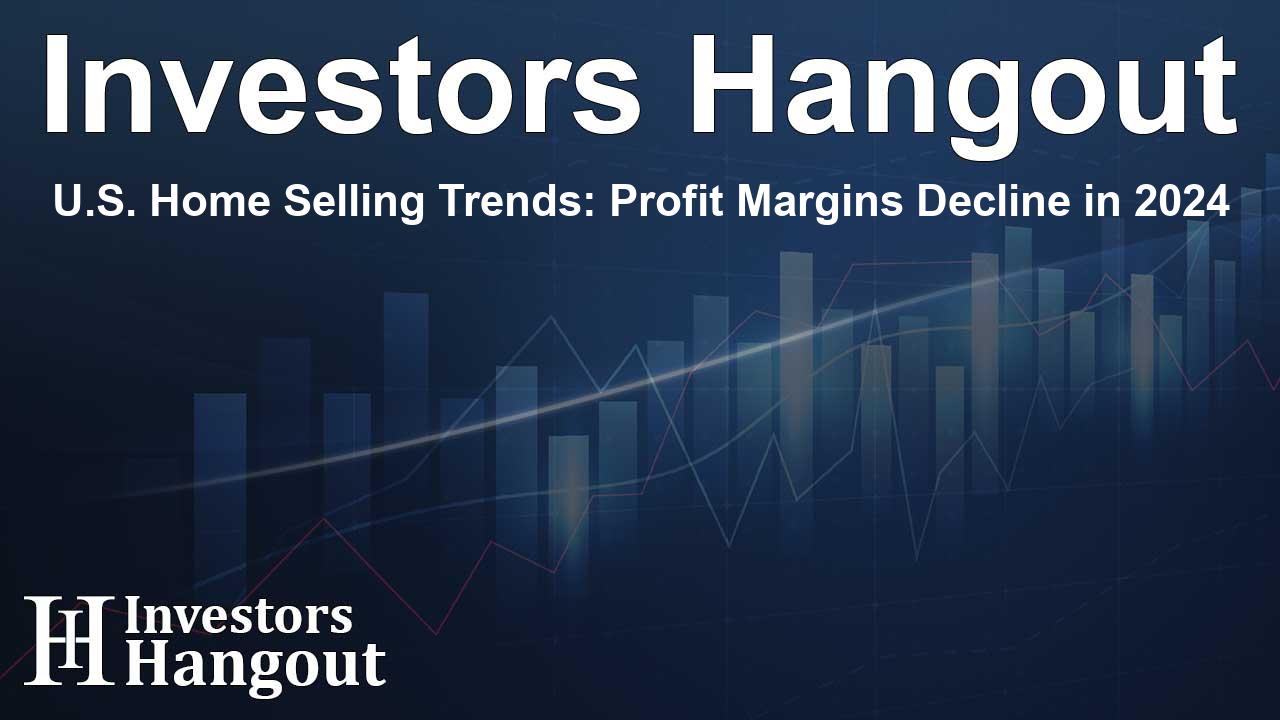U.S. Home Selling Trends: Profit Margins Decline in 2024

Profit Margins for Home Sellers Decline in 2024
In the latest trends of the housing market, data shows that profit margins for home sellers decreased for the second consecutive year. The typical seller's return is still impressive, hovering around 54%, but this represents a notable decline when compared to previous years. As the national median home price continues its upward trend, now at $350,000, homeowners encounter a mix of circumstances affecting their profits.
Understanding the Market Dynamics
The U.S. housing market has faced a unique set of challenges in recent years. Homeowners made a profit of $122,500 on average during sales, which amounts to a 53.8 percent return on investment. Interestingly, while profit levels remain historically high, the profit margin experienced a dip from 56.9 percent in 2023. This ongoing trend marks the first time consecutive declines have been recorded since the aftermath of the Great Recession.
Why Profit Margins are Decreasing
The increase in median home price—rising by 5 percent—has not sufficiently compensated for the significant price increases that many sellers had initially paid for their homes. Therefore, the expansion of profit margins that homeowners experienced previously cannot be sustained indefinitely. This has sparked concern among market analysts since many factors play a role in this financial landscape. Rising mortgage rates, coupled with an increased burden on household budgets due to home price hikes, are significant contributors to this issue.
Geographic Variances in Seller Returns
A closer look at specific metropolitan statistical areas reveals that sellers in more expensive markets generally enjoyed higher returns on their investments. The Northeast, South, and West regions together accounted for 29 of the top 30 returns, reflecting robust activity despite the declining margins. Cities like San Jose, CA, have notably high returns, showcasing regional disparities in the market.
Trends in Home Prices
The national median home price saw a robust increase, resulting in another annual record at $350,000. Housing values increased in 115 out of the 127 metropolitan areas studied. With such dynamics at play, even slight shifts in the market can have considerable ramifications for homeowners and potential sellers. Some cities showed dramatic increases in home values, exemplified by areas like Evansville, IN, and Augusta, GA, leading the charge with nearly double-digit year-over-year growth.
The Homeownership Landscape
Average homeownership tenure has also hit a highpoint, with homeowners selling their homes after an average of 8.18 years. This figure marks an increase from previous periods and indicates a general hesitance among homeowners to enter the market again, likely due to fluctuating prices and interest rates. Many sellers are choosing to stay put, further complicating the housing supply issues which are contributing to inflated prices.
Seller Strategies Amid Rising Costs
In this complex environment, sellers need to adopt strategic approaches when considering listing their properties. Understanding the local market, potential price growth, and current economic indicators can help in making informed decisions. An increased reliance on financing and understanding market trends becomes paramount for sellers. Cash sales account for a significant portion of transactions, demonstrating how buyers need to be proactive to navigate current conditions.
Investment Trends in Real Estate
Institutional investments have also seen a decline as new purchases by such entities dropped to 6.3% of total home sales. Investment strategies are shifting, and as home sales continue to fluctuate, understanding macroeconomic factors such as inflation and interest rate adjustments will be critical for predicting future market behavior.
Frequently Asked Questions
What caused the decline in profit margins for 2024?
The decline can be attributed to rising home prices not matching the original purchase prices that sellers paid, thus squeezing profit margins tighter.
What is the average return on investment for home sellers?
The average return for home sellers in 2024 was approximately 53.8 percent.
Where were the highest returns on home investments found?
Regions like San Jose, CA, and Knoxville, TN, exhibited some of the highest returns on investment for home sellers.
How long are homeowners staying in their properties?
Homeowners are staying in their properties for an average of 8.18 years, marking the longest tenure since at least 2000.
What factors could influence future profit margins?
Future profit margins may be influenced by mortgage rates, home supply, and broader macroeconomic conditions such as inflation and wage growth.
About The Author
Contact Owen Jenkins privately here. Or send an email with ATTN: Owen Jenkins as the subject to contact@investorshangout.com.
About Investors Hangout
Investors Hangout is a leading online stock forum for financial discussion and learning, offering a wide range of free tools and resources. It draws in traders of all levels, who exchange market knowledge, investigate trading tactics, and keep an eye on industry developments in real time. Featuring financial articles, stock message boards, quotes, charts, company profiles, and live news updates. Through cooperative learning and a wealth of informational resources, it helps users from novices creating their first portfolios to experts honing their techniques. Join Investors Hangout today: https://investorshangout.com/
The content of this article is based on factual, publicly available information and does not represent legal, financial, or investment advice. Investors Hangout does not offer financial advice, and the author is not a licensed financial advisor. Consult a qualified advisor before making any financial or investment decisions based on this article. This article should not be considered advice to purchase, sell, or hold any securities or other investments. If any of the material provided here is inaccurate, please contact us for corrections.
